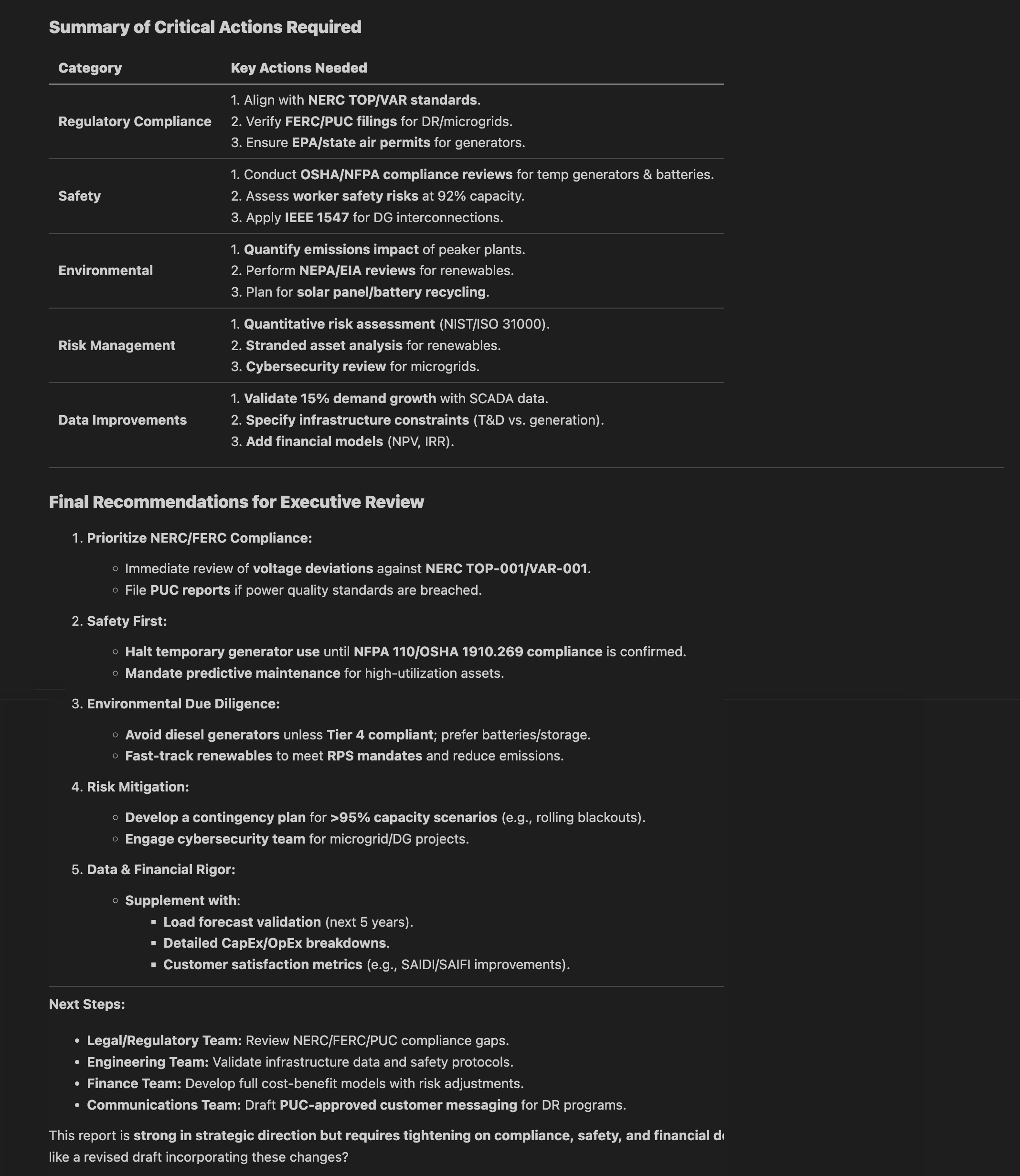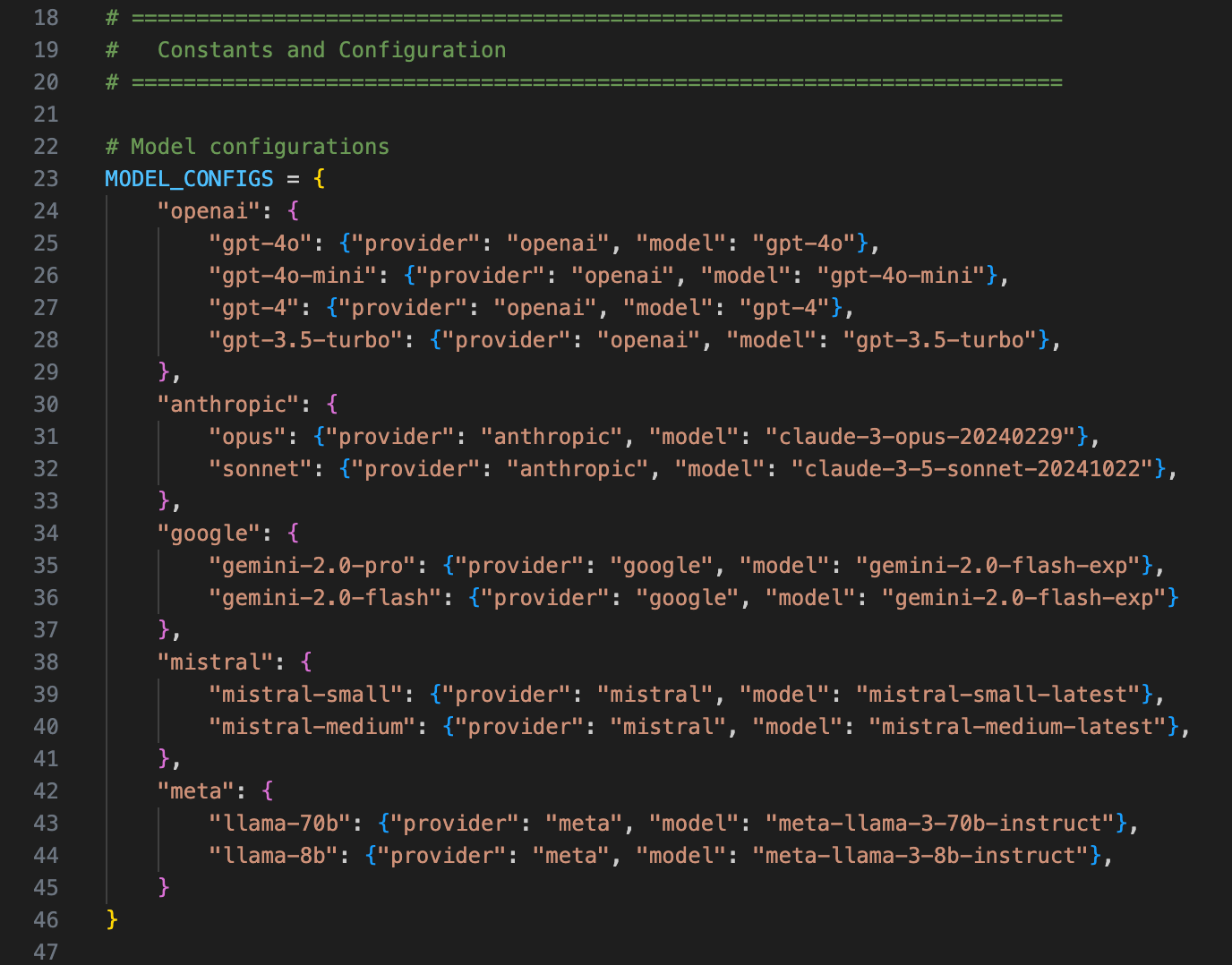
I developed a modular framework for coordinating multiple AI agents using Microsoft’s AutoGen, demonstrating how complex multi-agent workflows can be simplified into clean, maintainable code. The system showcases a utility infrastructure analyzer that produces comprehensive operational assessments.
For this project, I created an agentic chain with each agent assigned a distinct task:
- A technical analyst to investigate a 15% year-over-year spike in summer peak electricity demand and identify root causes
- A compliance reviewer to ensure the analyst’s recommendations meet regulatory standards and flag safety risks
- A strategic planner to transform technical findings into phased executive action plans with budget allocations
The architecture treats AI orchestration like project management, with a central coordinator (UserProxyAgent) delegating tasks to specialized agents. This design pattern eliminates the complexity of managing API calls, conversation state, and message routing between different AI providers.

Key technical achievements include multi-provider integration—i.e.g, OpenAI, Anthropic, Mistral, Google, and Meta), type-safe configuration using Python dataclasses, comprehensive logging for debugging, and clean separation of duties. The modular design allows new agents to be added with minimal code changes., with much greater versatility than the example code Microsoft provides in its Quickstart documentation.
This project serves as a template for building sophisticated AI systems that require multiple perspectives, showcasing how proper abstraction can transform complex orchestration challenges into straightforward configuration tasks.